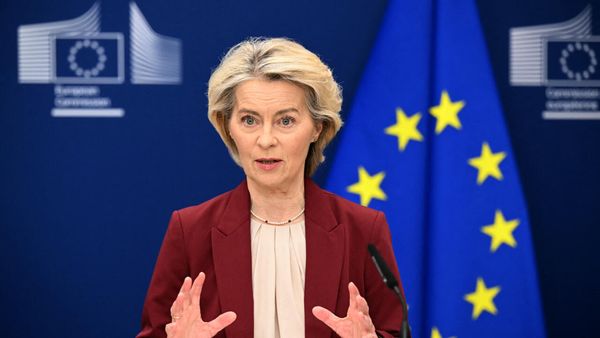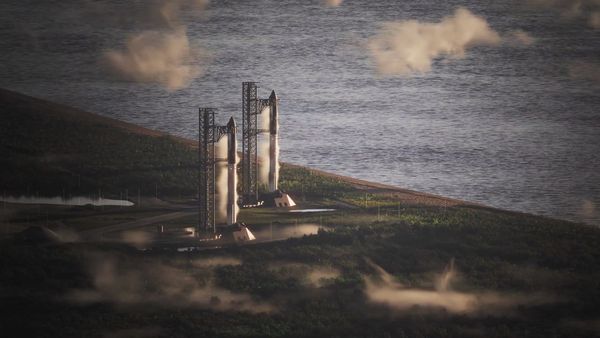
LAS VEGAS — Notes from around the NBA and observations from Summer League.
- The future of LeBron James was a hot topic among execs decamped in the stands inside the Thomas & Mack Center. Even after opting into the final year of his contract—guaranteeing him nearly $53 million through his age-41 season—James’s future is murky. His agent, Rich Paul, isn’t exactly shutting down the gossip. And James, who was courtside for a couple of Bronny James–led Lakers Summer League games, isn’t saying anything.
The prevailing belief among execs—at least the ones I talked to—is this July intrigue won’t lead anywhere. A buyout is out of the question. A Buss-led franchise isn’t paying anyone real money to play elsewhere, much less James. Incoming owner Mark Walter may have a different perspective, but it would shock a lot of people if L.A. paid James to go chase a championship elsewhere.
A trade? More plausible than a buyout, but where? Golden State? L.A. isn’t interested in Jimmy Butler’s contract. Dallas isn’t keen on gutting its roster for James. I’m told the Knicks aren’t either. New York is pretty happy with its offseason, which included adding Jordan Clarkson and Guerschon Yabusele to the mix. And Mike Brown has been a big hit with everyone in the organization. Besides, the history between James and Leon Rose and William Wesley—Rose, James’s former agent, and Wesley, a former close adviser are now the two most influential execs in New York—coupled with a still frosty relationship between Rose and Wesley and Paul’s Klutch Sports, makes that feel unlikely.
Could the crosstown Clippers make a play? Maybe. The Clips have had a solid offseason, turning Norman Powell into John Collins and Bradley Beal. But any deal that doesn’t include Kawhi Leonard is tricky. And I’m not sure either team would be interested in that.
James’s desire for the Lakers to push their chips in is understandable. The clock is ticking on his career and as formidable as a James–Luka Doncic duo is, L.A. needs something to compete with Oklahoma City, Houston, Denver, even Dallas in the Western Conference. But the Lakers’ preference to preserve their cap flexibility is understandable, too. When James’s contract comes off the books, L.A. will have the opportunity to acquire another star to pair with Doncic, one who better fits the timeline of a team with a 26-year-old star.
There could be some uncomfortable moments when training camp opens in September. But right now, all indications are that James will be there.

- Damian Lillard’s decision to return to Portland, which Sports Illustrated reported on Thursday, was a shocker. In the aftermath of his record-breaking buyout with Milwaukee, Lillard was widely expected to sign with a contender, with several registering early interest. Instead, Lillard returns to Portland, where he spent his first 11 seasons.
The biggest reason, I’m told: Family. Lillard embraced being traded to Milwaukee and was excited for a chance to win a championship. But he missed the life he left behind, which included his three kids, who stayed in the Pacific Northwest. Consider what Lillard told SI in 2024, five months after the trade.
“Being away from my kids is tough,” Lillard says. “In Portland, my life was set up. My mom was down the street; my brother was the other way down the street. My sister was down the street. My kids in school. Just my whole life was set up perfectly right there. It was a great situation. So just leaving that behind alone is a lot.
“It’s definitely lonely because I’m such a family guy. My life is my family. After games, I would come out and my whole family would be back there. My kids coming out of the playroom. My mom, my brother, my cousins lived there, you know what I mean? My best friends live in Portland. So I would come out, we would go to dinner. They might come to my house. After practice, I might go to my mom’s house and just chill. That’s how my life was. So, I mean, I’m fine because I’m grown. But it’s definitely lonely. I’m filled up by those people.”
In returning to Portland, Lillard, 35, may be giving up his dream of winning a championship. The Blazers are rebuilding. There is some interesting talent on the roster—more on that below—but Portland is years away from contending. Lillard is expected to spend all of the 2025–26 season rehabbing his surgically repaired Achilles. When he is ready to play, he will join a team more in need of a veteran mentor than a missing piece.
Winning undoubtedly still matters to Lillard. But after two years away he has learned that some things matter more.
- Is the NBA pumping the brakes on expansion? That’s the impression NBA commissioner Adam Silver left this week. Speaking with reporters following the NBA’s Board of Governors meeting, Silver said the league had been tasked with doing an “in-depth analysis of all the issues around expansion.” Pressed for a timeline, Silver said it was “Day 1” of the NBA’s formal look at expansion.
It was surprising, to the extent that many expected the NBA to be further along. Instead Silver, citing economic and basketball concerns, reiterated that there were no guarantees the league would expand at all. When I asked Silver the temperature of the owners about expansion, he responded, “curious.”
“I think if I were an owner, ultimately, what you’re considering is, is this additive to the league?” Silver said. “Additive can be measured in lots of different ways. There’s additive economically. But I think there is, from a competitive standpoint, how would particular markets impact our national footprint. I think, also, how would certain owners fit in in terms of the league dynamic. There’s strategic value to a lot of the owners in this league. I think one of the reasons this league is doing so well is because of the collection of team owners we have right now.”
There are legitimate reasons not to expand. On the court, the NBA has achieved competitive balance. There has been a new champion in each of the last seven years. Next season, more than two-thirds of the league will begin thinking playoffs—or more.
Economically, owners are thrilled with the 11-year, $76 billion national broadcast rights deal that will kick in next season. Two new teams means that pie gets divided even further. And with local TV rights in flux, the national deal represents the largest—and most stable—form of revenue.
“I think we would be malpracticing if we didn’t figure out how local and regional television is going to work before expanding,” Silver said. “The notion that we hand over a team to a city we are not currently operating in and say, You’re going to have to figure out how you’re going to distribute your games to your local fans, doesn’t make any sense.”
Still, the NBA clearly has interest in new markets. Seattle, where the NBA spent decades and has a thriving WNBA team. Las Vegas, one of the fastest-growing regions in sports. Could a current team relocate? There are the usual suspects. The Pelicans have struggled to gain traction in New Orleans. Their lease with the Smoothie King Center reportedly expires in 2029. Memphis’s lease with FedEx Forum ends the same year, though city officials have been working on an extension. The Blazers are currently for sale and while Silver said his preference was for the team to remain in Portland, he noted the team “likely needs a new arena” which “will be part of the challenge for any new ownership group coming in.”
The guess here is the league will ultimately expand. The $10 billion—or more—in franchise fees for two new teams is appealing and would mitigate the cost of further divvying up the new TV deal. But it was long believed the NBA would expand before the end of the decade. Based on Silver’s comments, that may be wishful thinking.
- I admit—I was skeptical of Portland’s decision to use a mid-first-round pick on Yang Hansen, the 20-year-old Chinese 7-footer who climbed out of the stands to shake Silver’s hand on draft night. But after watching Yang play this week, I can see why the Blazers did it.
Yang’s skills are legit. He’s a smooth passer and a confident three-point shooter. He has moves in the post and ball skills to play off the dribble. His upper body needs work, but he has tree trunk legs that will help him become a reliable rebounder. Yang patterned his game after Nikola Jokic, and you can see the shades of Jokic in it.
Portland is going to love him. His interviews have been endearing. His enthusiasm for the game is infectious. On Tuesday, I watched Yang drill a top-of-the-key three on one possession—celebrating with the John Cena face wave—and slipping a bounce pass to a cutting guard from the same spot on another. Expectations will be low for Yang this season. But the Blazers may have found something in him.
- Believe what your eyes tell you, which is what Johni Broome’s case to NBA teams was leading into the draft. Broome, the ex-Auburn star, averaged 18.6 points and 10.8 rebounds last season, finishing second in the voting for national player of the year and powering the Tigers to the Final Four.
So why did Broome slip all the way to 35th on draft night? Simple: Broome will turn 23 on Saturday, ancient by today’s NBA draft standards. In a league obsessed with upside, teams believed Broome had reached his ceiling.
Mistake. Big mistake. Broome’s numbers in Las Vegas have not been eye-popping. He’s averaging 13.5 points in 23.4 minutes with Philadelphia. But after struggling with his three-point shot in college, Broome has connected on 45.5% of his threes in Las Vegas. He’s pulling down nearly eight rebounds per game. In today’s cap-sensitive league, cheap, NBA-ready talent is coveted. The 76ers may have found one.
More NBA on Sports Illustrated
This article was originally published on www.si.com as Intrigue Over LeBron James’s Future Unlikely to Lead Anywhere.







